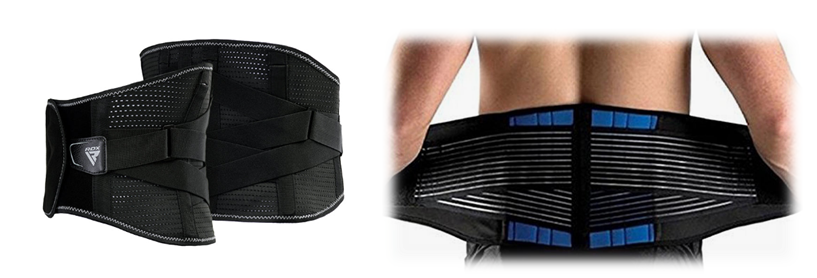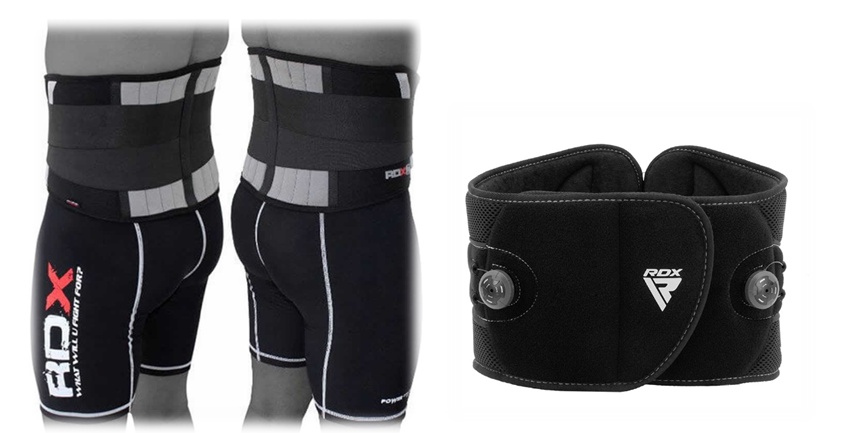Back protection is crucial for maintaining a healthy and pain-free back. In today's fast-paced world, where many individuals spend long hours sitting or engaging in physically demanding activities, ensuring proper back protection has become more important than ever. This article explores the significance of back support, common causes of back pain, various types of back protection products, and tips for integrating back protection into daily life.
Importance of Maintaining Proper Back Support:
Maintaining proper back supports is crucial for overall spinal health and well-being. The spine, also known as the backbone, plays a fundamental role in supporting the body's weight, facilitating movement, and protecting the delicate spinal cord. Proper back protection ensures that the spine remains aligned and supported, reducing the risk of injury, discomfort, and long-term damage.
One of the primary reasons for maintaining proper back protection is to prevent back pain and related musculoskeletal issues. Slouching or hunching over due to poor posture can exert excessive pressure on the spine and its adjacent muscles, ligaments, and discs. Over time, this strain can lead to muscle imbalances, stiffness, and chronic pain.
Proper back support also promotes optimal circulation and nerve function throughout the body. When the spine is aligned correctly, it allows for unimpeded flow of blood and nutrients to the muscles, organs, and tissues. Additionally, maintaining proper back supports prevents compression of nerves along the spinal column, reducing the risk of nerve impingement, numbness, and tingling sensations in the extremities.
Common Causes of Back Pain:
Back pain can stem from various factors, including muscle strain, ligament sprains, disc degeneration, and structural abnormalities. Poor posture, excessive weight, repetitive movements, and inadequate physical activity can exacerbate back pain. Identifying the underlying cause is essential for implementing effective solutions and preventing recurrent issues.
Types of Back Support Products:
Braces and Belts:
Braces and belts provide external support to the back, promoting proper alignment and reducing strain on the muscles and ligaments. These supportive devices are commonly used by individuals with acute or chronic back pain, as well as those recovering from injuries or surgery.
Ergonomic Chairs:
Ergonomic chairs are designed to support the natural curvature of the spine and promote healthy sitting posture. These chairs typically feature adjustable lumbar support, seat depth, and armrests, allowing users to customize their seating experience for optimal comfort and support.
Mattresses and Pillows:
Investing in a supportive mattress and ergonomic pillows is essential for maintaining proper spinal alignment during sleep. A mattress that is too soft or firm can exacerbate back pain, whereas a medium-firm mattress provides adequate support while relieving pressure points.
Benefits of Using Back Support Products:
Using back support products offers a multitude of benefits that can significantly improve your comfort, posture, and overall spinal health. Let's explore these benefits in detail:
- Improved Posture:
Back protection products, such as ergonomic chairs and lumbar cushions, are designed to encourage proper spinal alignment. By supporting the natural curvature of your spine, these products help you maintain a correct posture while sitting or standing, reducing strain on your back muscles and ligaments.
- Reduced Back Pain:
One of the most significant benefits of using back protection products is the alleviation of back pain. Whether you're suffering from acute discomfort or chronic pain, supportive braces, belts, or cushions can provide targeted relief by stabilizing your spine, reducing pressure on sensitive areas, and promoting muscle relaxation.
- Enhanced Comfort:
Back protection products are engineered to enhance your comfort during prolonged periods of sitting or standing. Ergonomic chairs with adjustable lumbar support, for example, provide tailored comfort by contouring to your body shape, relieving pressure points, and minimizing fatigue.
- Prevention of Injuries:
By providing additional support and stability to your spine, back protection products can help prevent injuries during physical activities or heavy lifting. Supportive braces and belts can reduce the risk of strains, sprains, and other musculoskeletal injuries by reinforcing your back muscles and promoting proper body mechanics.
- Increased Mobility:
Some back protection products, such as posture correctors and back braces, can improve your mobility by stabilizing your spine and reducing pain. By enhancing your confidence and range of motion, these products enable you to perform daily activities with greater ease and independence.
- Customizable Support:
Many back protection products offer adjustable features, allowing you to customize the level of support according to your specific needs and preferences. Whether you prefer firmer lumbar support or softer cushioning, these customizable options ensure optimal comfort and effectiveness for every user.
- Promotion of Spinal Health:
Consistent use of back supports products can contribute to the long-term health of your spine by reducing the risk of degenerative conditions and chronic pain. By maintaining proper alignment and reducing strain on your spine, these products support overall spinal health and minimize the likelihood of future issues.
- Enhanced Productivity:
By alleviating discomfort and promoting better posture, back supports products can enhance your productivity and focus throughout the day. Whether you're working at a desk, driving, or engaging in other activities, improved comfort and posture enable you to concentrate more effectively and perform tasks with greater efficiency.
How to Choose the Right Back Support Product:
When selecting back support products, it is essential to consider factors such as comfort, effectiveness, durability, and affordability. Consulting with a healthcare professional or ergonomic specialist can help identify the most suitable options based on individual needs and preferences.

Exercises and Stretches for Back Support:
Engaging in regular exercises and stretches can strengthen the muscles surrounding the spine, improve flexibility, and alleviate tension. Activities such as yoga, Pilates, and core-strengthening exercises target the back muscles and promote better posture and spinal alignment.
Lifestyle Changes for Better Back Health:
In addition to using supportive products and exercising regularly, making lifestyle changes can further contribute to better back health. Maintaining a healthy weight, practicing good posture, staying hydrated, and avoiding prolonged sitting or standing can all help prevent back pain and discomfort?
Tips for Using Back Support Products Effectively:
To maximize the benefits of back support products, it is essential to use them correctly and consistently. Following manufacturer instructions, adjusting the product to fit properly, and taking breaks to stretch and move throughout the day can enhance their effectiveness and longevity.
Myth Busters: Debunking Misconceptions about Back Support
There are many myths and misconceptions surrounding back supports, such as the belief that wearing a brace weakens the back muscles or that sitting up straight is the only way to maintain good posture. By dispelling these myths, individuals can make informed decisions about their back health.
Case Studies: Real-Life Examples of Back Support Success
Sharing real-life examples of individuals who have successfully improved their back health with the help of back support products can inspire others to take proactive steps toward better posture and pain management.
Professional Help: When to Seek a Doctor or Specialist
While back support products can provide relief for mild to moderate back pain, severe or persistent symptoms may require professional intervention. Consulting with a doctor or specialist can help diagnose underlying conditions and develop a comprehensive treatment plan.
Incorporating Back Support into Daily Routine:
Integrating back supports into daily routines, such as using ergonomic furniture at work, practicing good posture while sitting and standing, and performing regular stretches and exercises, can help maintain spinal health and prevent future issues.
Long-Term Benefits of Prioritizing Back Support:
By prioritizing back best support and adopting healthy habits, individuals can enjoy long-term benefits such as reduced risk of injury, improved mobility and flexibility, and enhanced quality of life.
Conclusion:
Investing in back support is essential for maintaining a healthy spine and preventing back pain. By incorporating supportive products, engaging in regular exercise, and making lifestyle changes, individuals can improve posture, alleviate discomfort, and enhance overall well-being.


No comments yet